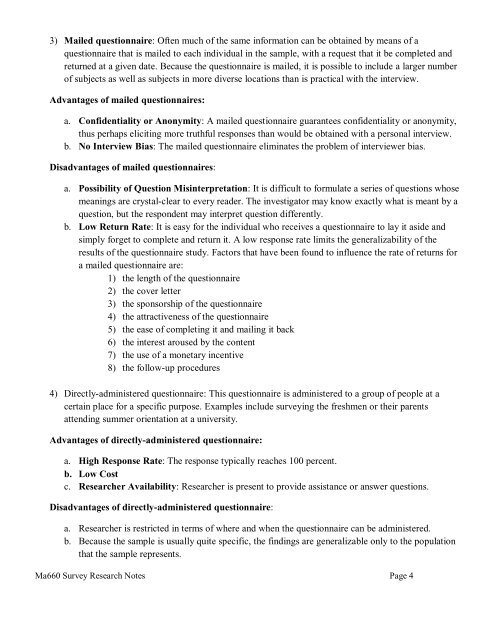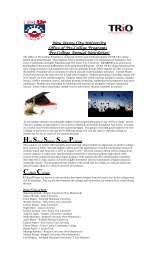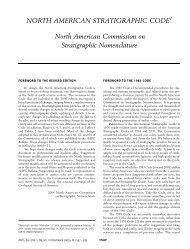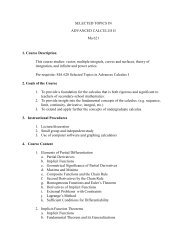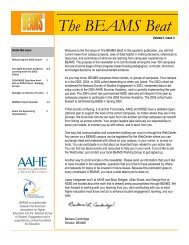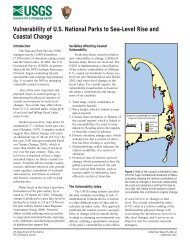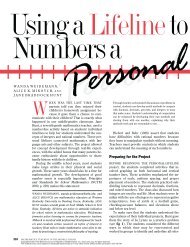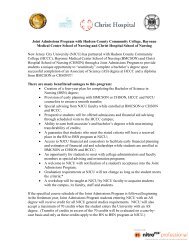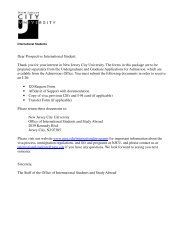Survey Research Types of Surveys Surveys are classified according ...
Survey Research Types of Surveys Surveys are classified according ...
Survey Research Types of Surveys Surveys are classified according ...
Create successful ePaper yourself
Turn your PDF publications into a flip-book with our unique Google optimized e-Paper software.
3) Mailed questionnaire: Often much <strong>of</strong> the same information can be obtained by means <strong>of</strong> a<br />
questionnaire that is mailed to each individual in the sample, with a request that it be completed and<br />
returned at a given date. Because the questionnaire is mailed, it is possible to include a larger number<br />
<strong>of</strong> subjects as well as subjects in more diverse locations than is practical with the interview.<br />
Advantages <strong>of</strong> mailed questionnaires:<br />
a. Confidentiality or Anonymity: A mailed questionnaire guarantees confidentiality or anonymity,<br />
thus perhaps eliciting more truthful responses than would be obtained with a personal interview.<br />
b. No Interview Bias: The mailed questionnaire eliminates the problem <strong>of</strong> interviewer bias.<br />
Disadvantages <strong>of</strong> mailed questionnaires:<br />
a. Possibility <strong>of</strong> Question Misinterpretation: It is difficult to formulate a series <strong>of</strong> questions whose<br />
meanings <strong>are</strong> crystal-clear to every reader. The investigator may know exactly what is meant by a<br />
question, but the respondent may interpret question differently.<br />
b. Low Return Rate: It is easy for the individual who receives a questionnaire to lay it aside and<br />
simply forget to complete and return it. A low response rate limits the generalizability <strong>of</strong> the<br />
results <strong>of</strong> the questionnaire study. Factors that have been found to influence the rate <strong>of</strong> returns for<br />
a mailed questionnaire <strong>are</strong>:<br />
1) the length <strong>of</strong> the questionnaire<br />
2) the cover letter<br />
3) the sponsorship <strong>of</strong> the questionnaire<br />
4) the attractiveness <strong>of</strong> the questionnaire<br />
5) the ease <strong>of</strong> completing it and mailing it back<br />
6) the interest aroused by the content<br />
7) the use <strong>of</strong> a monetary incentive<br />
8) the follow-up procedures<br />
4) Directly-administered questionnaire: This questionnaire is administered to a group <strong>of</strong> people at a<br />
certain place for a specific purpose. Examples include surveying the freshmen or their p<strong>are</strong>nts<br />
attending summer orientation at a university.<br />
Advantages <strong>of</strong> directly-administered questionnaire:<br />
a. High Response Rate: The response typically reaches 100 percent.<br />
b. Low Cost<br />
c. <strong>Research</strong>er Availability: <strong>Research</strong>er is present to provide assistance or answer questions.<br />
Disadvantages <strong>of</strong> directly-administered questionnaire:<br />
a. <strong>Research</strong>er is restricted in terms <strong>of</strong> where and when the questionnaire can be administered.<br />
b. Because the sample is usually quite specific, the findings <strong>are</strong> generalizable only to the population<br />
that the sample represents.<br />
Ma660 <strong>Survey</strong> <strong>Research</strong> Notes Page 4


